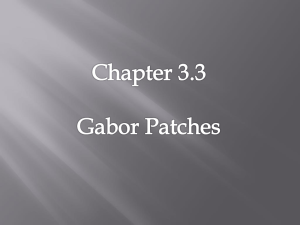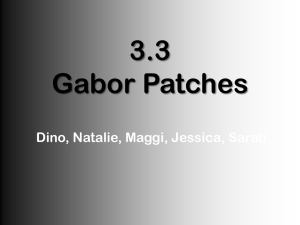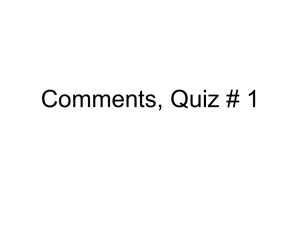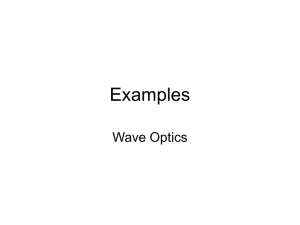Negative Bi-refraction of Longitudinal Acoustic Wave in a Sonic Crystal
advertisement
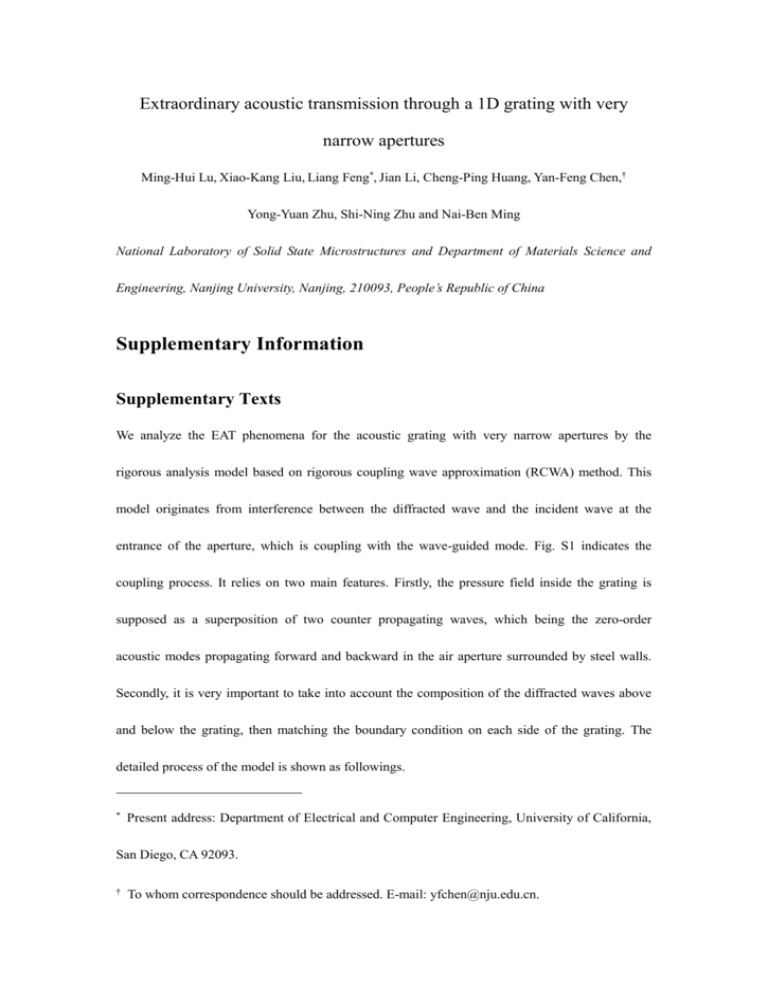
Extraordinary acoustic transmission through a 1D grating with very narrow apertures Ming-Hui Lu, Xiao-Kang Liu, Liang Feng*, Jian Li, Cheng-Ping Huang, Yan-Feng Chen,† Yong-Yuan Zhu, Shi-Ning Zhu and Nai-Ben Ming National Laboratory of Solid State Microstructures and Department of Materials Science and Engineering, Nanjing University, Nanjing, 210093, People’s Republic of China Supplementary Information Supplementary Texts We analyze the EAT phenomena for the acoustic grating with very narrow apertures by the rigorous analysis model based on rigorous coupling wave approximation (RCWA) method. This model originates from interference between the diffracted wave and the incident wave at the entrance of the aperture, which is coupling with the wave-guided mode. Fig. S1 indicates the coupling process. It relies on two main features. Firstly, the pressure field inside the grating is supposed as a superposition of two counter propagating waves, which being the zero-order acoustic modes propagating forward and backward in the air aperture surrounded by steel walls. Secondly, it is very important to take into account the composition of the diffracted waves above and below the grating, then matching the boundary condition on each side of the grating. The detailed process of the model is shown as followings. * Present address: Department of Electrical and Computer Engineering, University of California, San Diego, CA 92093. † To whom correspondence should be addressed. E-mail: yfchen@nju.edu.cn. The geometry of the square rods metallic grating transmission problem discussed in the paper is shown in Fig. S2. An acoustic wave incident on the grating produces both forward-diffracted and back-diffracted waves. We separate the whole area with three regions. Region I (the input region) is a homogeneous air background, region III is the outgoing region with homogeneous air background too, and region II is the grating region. So the representation of the acoustic pressure field in three regions may be expressed as: , P Pi Pr exp j k x 0 x k z 0 z Rm exp j k xm k zm (1) m P Tm exp j k xm x k zm ( z h) . (2) m The pressure field in region II can be expressed as the rectangular wave guide mode: P cos( x)A exp jqz B exp jqz , k x 0 k sin 2 where , k , then k x 0 k sin (3) 2 k xm k x 0 m d , and q and βare the 2 1/ 2 k zm k 2 k xm propagating constant and eigen wave vector of wave guide. From the pressure filed expressions. We can obtain the acoustic particle velocity u with the equation: u P 0 d t. (4) At the entrance of the aperture, considering the two boundary condition as following: Pz 0 Pz 0 u z z 0 u z z 0 Pz h Pz h u z z h u z z h , (5) The solutions of these equations can be determined as: jqh A 2 g 0 1e F , jqh F B 2 g 0 2 e and F 1 e 2 jqh 22 e jqh (6) 1 , (7) which is the enhancement factor of diffracted waves discussed in the paper. 1 Here, 2 m m g m s m qf a sin c kzm 2 g m s m qf a , sin c kzm 2 (8) g m sin ck xm a / 2 a 1 2 where s m cosx e jkxm x dx . a a 2 (9) So substitute the Eqs. (1), (2), (3) and (6) into Eqs. (5), we can get the reflectivity and transmissivity as: k z 0 0 n qfs n k qfs A B z 0 0n n 2 g 0 1e jqh 2 e jqh F Rn k k zn k zn k zn zn a 4 g 0 sin c qfs n qfs n 1 a 2 Tn 4 g 0 sin c F 2 jqh k zn k zn 1 e 1 2 2 . (10) Then the zero-order transmission may be expressed as: t 0 Re( k z 2 0 ) T0 . k z0 (11) Now, how to determine the eigen wave vector and propagating constant of the aperture wave – guide? Considering the real boundary, the β can be determined by the equation as following: tana jk g jb , (12) where g-jb is the ratio of the conductance of the steel plate, which can be expressed as: Z0 0 c0 g jb , jM st Z 0 j st (d a) 0 c 0 g jb (13) So the zero-order wave guide mode: β and propagating constant q can be obtained. jk g jb / a1 / 2 . 1/ 2 q k 2 2 (14) Supplementary Figures and Legends Supplementary Figure S1 Pi Pdiffr Pout Supplementary Figure S1. Schematic of our theory model. The subwavelength narrow apertures stimulate the diffracted waves Pdiffr, which interfere with the incident wave Pi and coupled with the wave-guided mode at the entrance of the aperture. For every aperture, it is affected by the diffracted waves excited by other apertures and the backscattering diffracted waves excited by itself. Pi d I Ⅱh III a Supplementary Figure S2. Geometry of the rectangular metallic acoustic grating Acoustic grating BK 3560C BK free-field 1/8 inch Microphone Output signal Ultrasonic transducer Computer Input signal Supplementary Figure S3. Schematic of the experimental setup. The experimental setup is used to measure the transmission of ultrasonic wave in an acoustic grating, consisting of a ultrasonic transducer, a flat rectangular acoustic grating of steel cylinders, an acoustic pulse analyzer BK3560C, which can supply pulsed signal output and analyze the received signal by the microphone. With the BK SSR software package, the zero-order transmission spectra could be obtained
